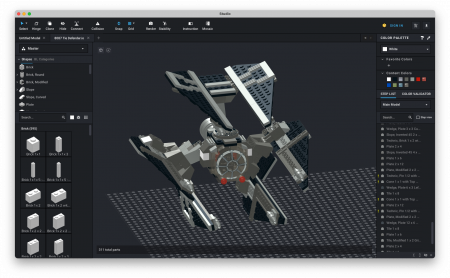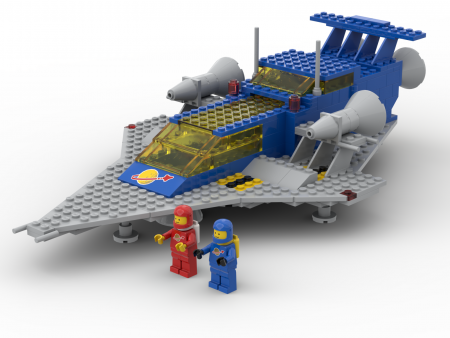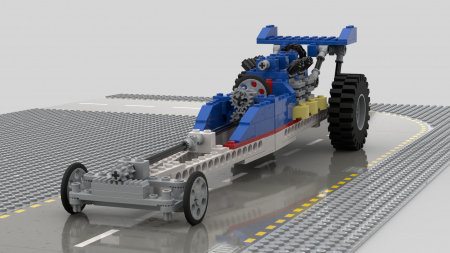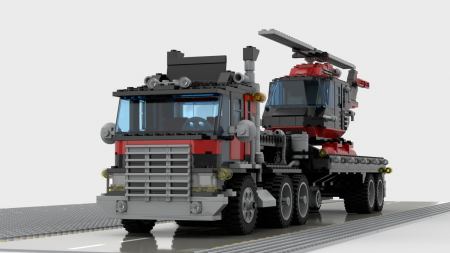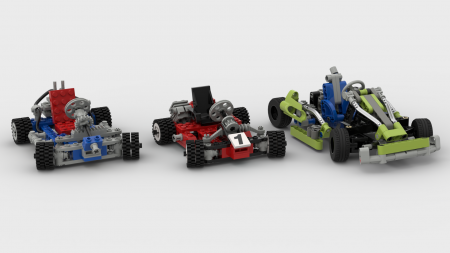Quite a while back, I wrote about how much fun I was having with Lego Digital Designer (LDD). I was really pleased with that program, and have used it a lot (mostly to put together old sets from my childhood that I no longer have). Unfortunately Lego discontinued support in 2016. This wasn’t a huge deal at first; it just meant that new pieces weren’t being added. However, LDD for Mac is 32 bit, and Apple axed 32 bit support with the release of MacOS 10.15 Catalina. I actually abstained from upgrading to Catalina because of a few 32 bit apps, the most prominent of which was LDD. Eventually though, I had to upgrade and say goodbye to LDD.
Luckily, I found a way to fill the Lego shaped void in my heart. I discovered a program called Studio. Studio is developed by the people at Bricklink. It is very similar to LDD, but it is actually much better. It uses the LDRAW library of pieces so it’s parts inventory is much more complete than LDD’s.
It has a built in render function for making photo-realistic images of your creations that looks amazing. It’s really easy to use, and turns out great results.
You can import the pieces from real Lego sets by entering in the set number. All the pieces you need will be placed knolled on the build field. This is great for people who want to build sets virtually, like me, or for people who like to make instruction for My Own Creations (MOCs) where alternative builds are made using the same pieces from a real Lego set.
Overall, I think that Studio is fantastic, and I am so glad to have it available to use.
Other Thoughts on Lego
Lego has gone through many different generations and has evolved a bit with each one. I think any given generation will say the sets they grew up with were “the best,” but I find people are always most sentimental for what they had when growing up. Obviously though, what I grew up with in the 90’s was the best.
Technic
I played with Lego a lot as a kid, and I would build all sorts of things. Though I made a lot of spaceships and cars, I feel like a bulk of my free play was inventing mechanical things with Technic bricks. I remember making arms, gearing system, levers, and all sorts of interesting things.
I now play Lego with my kids, and one thing I find is how much I struggle to make mechanical things using the current Technic bricks. The bricks I am used to were just regular bricks with holes in them. My Technic cars would be two 16 long Technic bricks spaced apart and held together by a couple plates. It was quick and easy to build something like that. The new generation of Technic bricks are completely smooth, and my brain just didn’t get wired for dealing with it. I find it much more limiting somehow and struggle to build some things that I feel should be simple.
Collectible Sets
Another thing that feels like it’s changed since the 90’s is the proliferation of licensed and collectible/limited sets. The first licensed Lego set was Luke’s X-Wing (7140) which was introduced in 1999. Up to this point all Lego sets were all based on internal Lego themes, like Pirates, City, Space, etc. The popularity of licensed sets grew during the 2000’s. There were (and still are) licensed themes like Harry Potter, Star Wars, Minecraft, and Disney. And with the proliferation of these licensed sets came the behavior of collecting. People (nerds) want to display their sets or collect all their favorite things from their beloved franchises.
The old way of Legoing seemed to be buy -> build -> play -> destroy. Now a common progression is to buy -> build -> display. I am definitely guilty of this too. I have the Grogu set and you can bet I’m not letting the pieces get mixed in with everything else because it was a limited set and builds something super specific.
I recently read a comment on Hacker News where someone was lamenting that Lego sets have become 3D puzzles rather than a play system, and that sentiment really resonated with me.
Highly Specialized Pieces
Lego introduces new parts every year. They always have, and they always will. I think it’s good for things to grow and evolve, however it also feels like adding more and more parts dilutes the abstractability of the medium. Making very specific parts to a set that can only be used in a single way feels like it works against the free-play mentality that one associates with Lego.
This though really isn’t as much of a problem as one might think. If you are free-building with Lego and have these pieces, you either find creative ways to use them, or you ignore them. It’s a non-issue, but something I see come up a lot in discussions of modern-day Lego.
In any case, Lego remains one of my favorite things to play with, whether physically or digitally. It can be an open landscape for your imagination, and I’m glad that it’s available for me and my children to enjoy.
